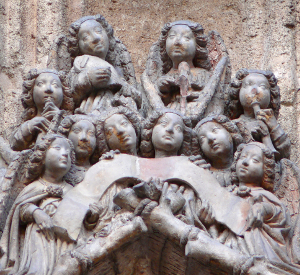History of the project
Paisajes Sonoros Históricos (c.1200-c.1800) / Historical Soundscapes is a website designed to explore historical urban soundscapes in cities around the world, aided by the outreach potential made possible through new technologies. Historical Soundscapes is essentially a cartographic project, since the incorporation of its content, in the form of micro-articles or ‘events’, takes the geolocation of different spaces as its starting-point. This innovative approach will allow users to recreate music of the past in historical locations through the use of online interactive maps with digital resources (documents, videos, sounds, etc.). The contents aim to be inclusive and help achieve a better understanding of urban culture, establishing an aesthetic and intellectual dialogue with their sensorial aural history through an interdisciplinary approach that brings together urban musicology with areas including cultural history and art history, among others. This portal intends to become a useful and innovative tool for educational and cultural leisure institutions, taking a further step towards an effective and real transfer of knowledge that reduces the gap between academic research and public knowledge.
The following are the main milestones in the history of this project:
* On 21 September 2015, after just over a year and a half of gestation, we launched the digital platform Paisajes Sonoros Históricos de Andalucía (c. 1200-c.1800) online for its presentation at the international workshop "Hearing the Cities: Musical Experience as Portal to Urban Soundscapes", organised by Tess Knigthon in Barcelona. The project was born with just two cities, Granada and Seville, to test its versatility from the outset.
* At the beginning of 2019, we decided to face the challenge of breaking the geographical limits imposed by the aforementioned urban centres with which we had started the project. After a deep reflection and a fruitful dialogue, from a computer science and musicological point of view, key to any adventure that we want to undertake in the field of Digital Humanities, we developed a new tab that we call "Interconnected Cities". Through this tab, we access OpenStreetMap, where all the mapped articles are displayed, now without any geographical limitation to a specific closed urban centre. Through "Interconnected Cities", Paisajes Sonoros Históricos / Historical Soundscapes has become a collaborative platform, where any researcher can map their articles, which are automatically included in the journal of the same name and uploaded to the open access repository ZENODO.
* At the end of May 2022, we released version 2.0 of Paisajes Sonoros Históricos / Historical Soundscapes. In this version, all the frameworks and libraries used in the platform's computer architecture have been updated. At the same time, we have carried out an in-depth redesign of the home page to improve its aesthetic and functional aspects, the latter including two new tabs: "Cities with historical cartography" and "Cartographic projects". In the first tab, which is likely to continue to grow, we have added the cities of Barcelona, Madrid, Valencia, and Valladolid, for which we have integrated the corresponding historical maps, which you find out more about in the "Historical cartography" section of the About tab. In the second new tab, we have individualised a series of thematic projects to provide users with instantly updated results, each with its search engine.
* Throughout 2023, we have implemented some of the existing tools with new functionalities to increase the analytical potential of the platform and improve the search and content retrieval engines. Among these, it is worth highlighting the one that allows us to draw itineraries, to which we have given total geographical versatility, with the possibility of connecting cities in an unlimited way, and with which it is possible to create resources that can be added to the published articles.

Puerta del Nacimiento (15th century). Cathedral of Seville